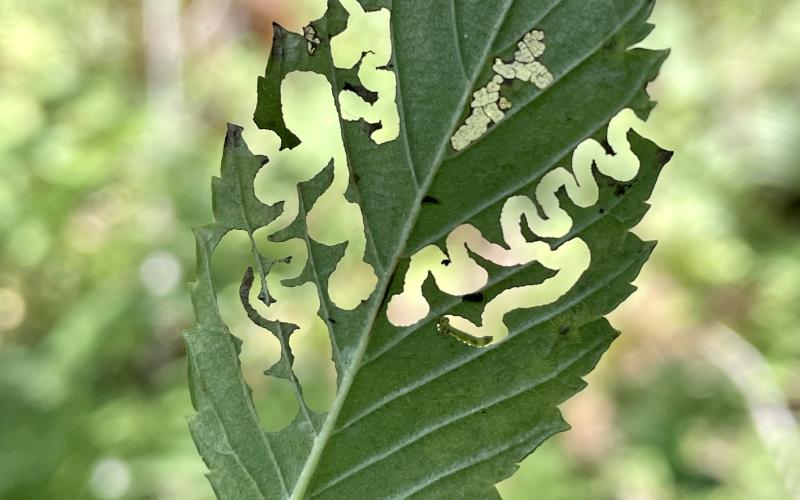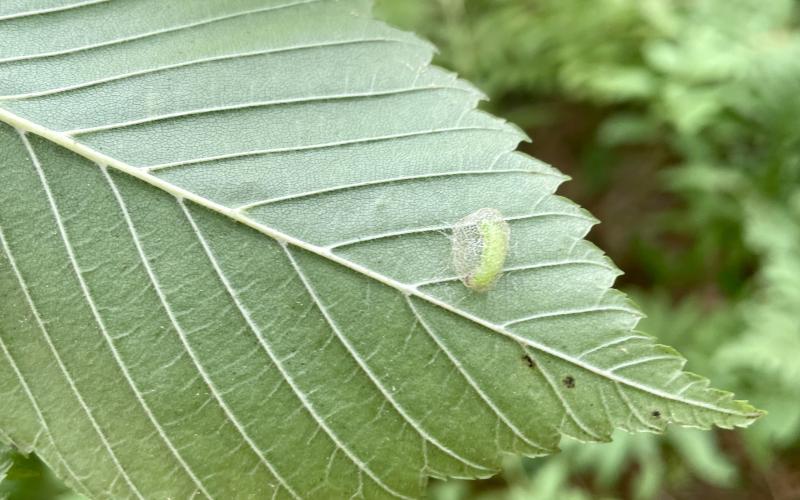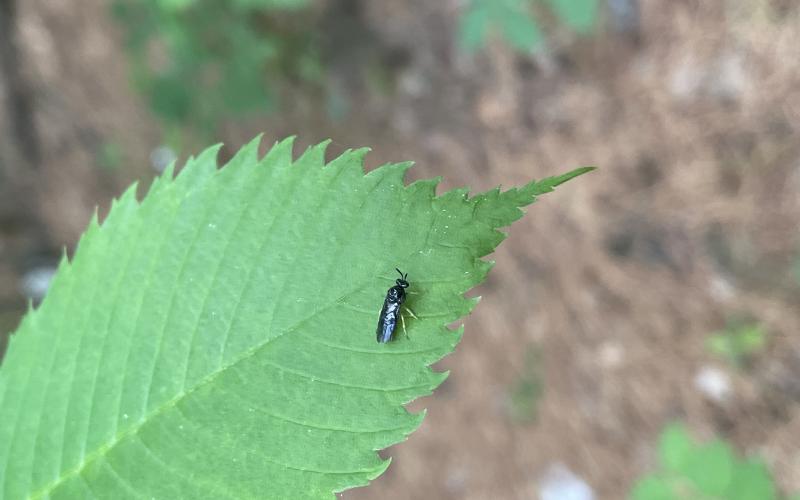Scientific Name: Aproceros leucopoda
Native Range: Elm zigzag sawfly (EZS) is native to Asia including the eastern parts of China and Russia as well as Japan and the Korean Peninsula.
At Risk
Elm, Ulmus spp. including American, Siberian, Chinese, winged, English, slippery, lacebark, and some hybrids.
Distribution
It was found in Europe in 2003 and was first reported in North America in July of 2020 in Quebec, Canada. It has since been found in Maryland, Massachusetts, New York, North Carolina, Pennsylvania, Ohio, and Vermont.
Biology
Elm zigzag sawfly overwinters in the pupal life stage, and adult females emerge in the spring. Even though EZS are related to other bees and wasps, adult sawflies do not sting. To date, no adult male zigzag sawflies have been found. The entire population is female, and parthenogenetic. This means they can lay viable eggs without fertilization from a male. Eggs are laid in tiny notches on the edges of leaves. The larvae hatch and begin feeding on the leaves. In the summer, the pupa is located inside cocoons that are attached to the undersides of leaves, branches, or shoots in a loosely woven net. The overwintering cocoons are dense and found in the litter and duff layers of the soil on the ground. Multiple generations per year are possible.
Identification
The young larvae create a distinctive zigzag pattern through the elm leaves while feeding. The larvae are green with a black band on their head. They have T-shaped brown or black markings on the top of their second and third pair of legs. Adults are a shiny black wasp without a waist. Their body includes a yellowish-brown thorax with a white patch on the bottom. Their legs are yellowish-green ending in white and they have smoky brown wings. The adults resemble many other species of native adult sawflies. Identification will be easiest using the characteristic feeding pattern caused by the larvae.
Pest Status
It was first discovered in Ramsey County, Minnesota in July of 2024. It has since been found in multiple counties.
What Can I Do?
The impact of elm zigzag sawfly in the U.S. is currently unknown. In Europe, outbreaks regularly defoliate both urban trees and large amounts of natural elm forests. Trees can usually recover from a single defoliation, but repeated defoliations can weaken trees, predispose them to other issues, and sometimes result in death.
Small populations can be removed by hand. A general-purpose insecticide labeled for use on trees and shrubs can be used for larger populations. Treatments should occur in the spring as soon as larvae are present.
If you observe the characteristic zigzag damage on a leaf or an insect that looks like EZS, please take a picture or sample and contact the MDA via Report a Pest.
Smarty Plants Podcast
 Discover Smarty Plants, the Minnesota Department of Agriculture's podcast that digs into the fascinating world of invasive species. Join expert guests as they share insights and solutions to protect our environment and agricultural resources. Visit Smarty Plants and start listening today.
Discover Smarty Plants, the Minnesota Department of Agriculture's podcast that digs into the fascinating world of invasive species. Join expert guests as they share insights and solutions to protect our environment and agricultural resources. Visit Smarty Plants and start listening today.




